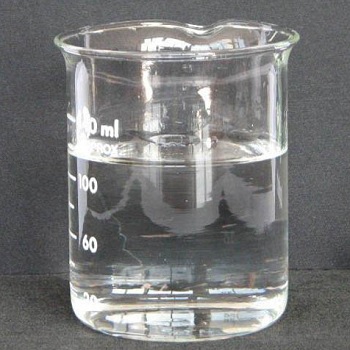2-Methylbutan Chemische Eigenschaften,Einsatz,Produktion Methoden
ERSCHEINUNGSBILD
FARBLOSE FLüSSIGKEIT MIT CHARAKTERISTISCHEM GERUCH.
PHYSIKALISCHE GEFAHREN
Die Dämpfe sind schwerer als Luft. Sie können sich am Boden ausbreiten. Fernzündung möglich. Fließen, Schütten o.ä. kann zu elektrostatischer Aufladung führen.
CHEMISCHE GEFAHREN
Kann beim Erhitzen explodieren.
ARBEITSPLATZGRENZWERTE
TLV (Pentan, alle Isomere): 600 ppm (als TWA); (ACGIH 2005).
MAK (Pentan, alle Isomere): 1000 ppm 3000 mg/m? Spitzenbegrenzung: überschreitungsfaktor II(2); Schwangerschaft: Gruppe C; (DFG 2006).
EG Arbeitsplatz-Richtgrenzwerte: 3000 mg/m? 1000 ppm (als TWA); (EG 2006)
AUFNAHMEWEGE
Aufnahme in den Körper durch Inhalation und durch Verschlucken.
INHALATIONSGEFAHREN
Nur ungenügende Angaben vorhanden über die Geschwindigkeit, mit der eine gesundheitsschädliche Konzentration in der Luft beim Verdampfen bei 20°C erreicht wird.
WIRKUNGEN BEI KURZZEITEXPOSITION
WIRKUNGEN BEI KURZZEITEXPOSITION: Die Substanz reizt die Augen, die Haut und die Atemwege. Verschlucken kann zur Aufnahme in der Lunge führen; Gefahr der Aspirationspneumonie. Möglich sind Auswirkungen auf Zentralnervensystem und Herz mit nachfolgenden Funktionsstörungen.
WIRKUNGEN NACH WIEDERHOLTER ODER LANGZEITEXPOSITION
Die Flüssigkeit entfettet die Haut.
LECKAGE
Gefahrenbereich verlassen! Fachmann zu Rate ziehen! Ausgelaufene Flüssigkeit möglichst in abdichtbaren Behältern sammeln. Reste mit Sand oder inertem Absorptionsmittel aufnehmen und an einen sicheren Ort bringen. NICHT in die Kanalisation spülen. Persönliche Schutzausrüstung: Atemschutzfilter für organische Gase und Dämpfe.
R-Sätze Betriebsanweisung:
R12:Hochentzündlich.
R51/53:Giftig für Wasserorganismen, kann in Gewässern längerfristig schädliche Wirkungen haben.
R65:Gesundheitsschädlich: kann beim Verschlucken Lungenschäden verursachen.
R66:Wiederholter Kontakt kann zu spröder oder rissiger Haut führen.
R67:Dämpfe können Schläfrigkeit und Benommenheit verursachen.
S-Sätze Betriebsanweisung:
S9:Behälter an einem gut gelüfteten Ort aufbewahren.
S16:Von Zündquellen fernhalten - Nicht rauchen.
S29:Nicht in die Kanalisation gelangen lassen.
S33:Maßnahmen gegen elektrostatische Aufladungen treffen.
S61:Freisetzung in die Umwelt vermeiden. Besondere Anweisungen einholen/Sicherheitsdatenblatt zu Rate ziehen.
S62:Bei Verschlucken kein Erbrechen herbeiführen. Sofort ärztlichen Rat einholen und Verpackung oder dieses Etikett vorzeigen.
Chemische Eigenschaften
2-Methylbutane (isopentane), C5H12, is a flammable liquid and exhibits physical properties very similar to those of pentane. It has been detected in urban air.

2-Methylbutane is an alkane that is butane substituted by a methyl group at position 2. It has a higher BP than butane because, although similarly branched, it has a higher MW. A useful analogy for comparing molecules with the same size of longest chain is that of cylindrical-shaped molecules. It has a role as a refrigerant. Biological samples flash frozen for example with a combination of liquid nitrogen and methylbutane can then be used for storage, cryosection, etc.
Physikalische Eigenschaften
Clear, colorless, watery, very flammable liquid with a pleasant odor. Evaporates quickly when
spilled. An odor threshold concentration of 1.3 ppm
v was reported by Nagata and Takeuchi
(1990).
Verwenden
Isopentane is an organic, branched-chain alkane with five carbon atoms. 2-Methylbutane undergoes catalytic dehydrogenation in the presence of chromia-alumina catalyst to form isoamylenes, which can undergo further dehydrogenation to form isoprene. It may also be used as a solvent in the preparation of trans-Bis(triethylphosphine) (hydroxy carbonyl) (phenyl) platinum(II), a metallacarboxylic acid.
Vorbereitung Methode
Isopentane is produced by fractional distillation of natural
gas liquids and crude oil.
synthetische
2-Methylbutane was synthesized by liquid-phase catalytic isomerization at 95°C using pentane as raw material.
Definition
ChEBI: 2-methylbutane is an alkane that is butane substituted by a methyl group at position 2. It has a role as a refrigerant.
Allgemeine Beschreibung
Watery colorless liquid with a gasoline-like odor. Floats on water. Flammable, irritating vapor is produced. Boiling point is 82°F.
Air & Water Reaktionen
Highly flammable. Insoluble in water.
Reaktivität anzeigen
2-Methylbutane is a fire and explosion hazard when in contact with oxidizing agents. .
Health Hazard
Inhalation causes irritation of respiratory tract, cough, mild depression, irregular heartbeat. Aspiration causes severe lung irritation, coughing, pulmonary edema; excitement followed by depression. Ingestion causes nausea, vomiting, swelling of abdomen, headache, depression.
Brandgefahr
Behavior in Fire: Highly volatile liquid. Vapors may explode when mixed with air.
Sicherheitsprofil
Mddly toxic and
narcotic by inhalation. See also PENTANE.
Flammable liquid. A very dangerous fire and
explosion hazard when exposed to heat,
flame, or oxidzers. Keep away from sparks,
heat, or open flame; can react with oxidizing
materials. To fight fire, use foam, CO2, dry
chemical. When heated to decomposition it
emits acrid smoke and irritating fumes.
Environmental Fate
Photolytic. When synthetic air containing gaseous nitrous acid and 2-methylbutane was exposed
to artificial sunlight (λ = 300–450 nm), acetone, acetaldehyde, methyl nitrate, peroxy-acetal
nitrate, propyl nitrate, and pentyl nitrate were formed (Cox et al., 1980).
Based upon a photooxidation rate constant of 3.90 x 10
-12 cm
3/molecule?sec with OH radicals in
summer daylight, the atmospheric lifetime is 36 h (Altshuller, 1991). At atmospheric pressure and
300 K, Darnall et al. (1978) reported a rate constant of 3.78 x 10
-12 cm
3/molecule?sec for the same
reaction.
Cox et al. (1980) reported a rate constant of 5.0 x 10
-11 cm
3/molecule?sec for the reaction of
gaseous 2-methylbutane with OH radicals based on a value of 8 x 10
-12 cm
3/molecule?sec for the
reaction of ethylene with OH radicals.
Chemical/Physical. Complete combustion in air produces carbon dioxide and water vapor.
2-Methylbutane will not hydrolyze because it does not contain a hydrolyzable functional group.
läuterung methode
Stir isopentane for several hours in the cold with conc H2SO4 (to remove olefinic impurities), then wash it with H2O, aqueous Na2CO3 and H2O again. Dry it with MgSO4 and fractionally distil it using a Todd column packed with glass helices. Material transparent down to 180nm is obtained by distilling from sodium wire, and passing through a column of silica gel which had previously been dried in place at 350o for 12hours before use. [Potts J Phys Chem 20 809 1952, Beilstein 1 IV 320.]
2-Methylbutan Upstream-Materialien And Downstream Produkte
Upstream-Materialien
Downstream Produkte

